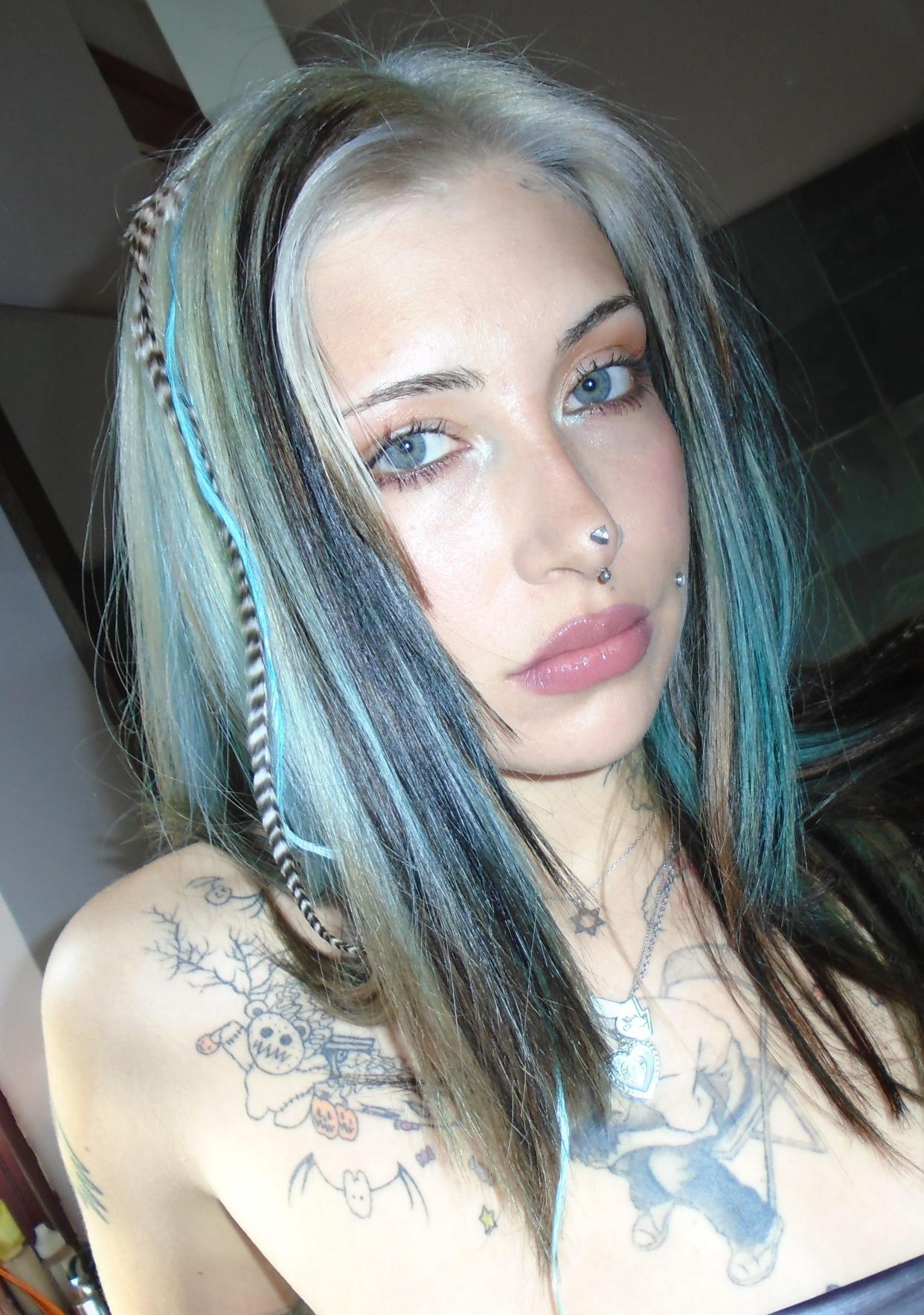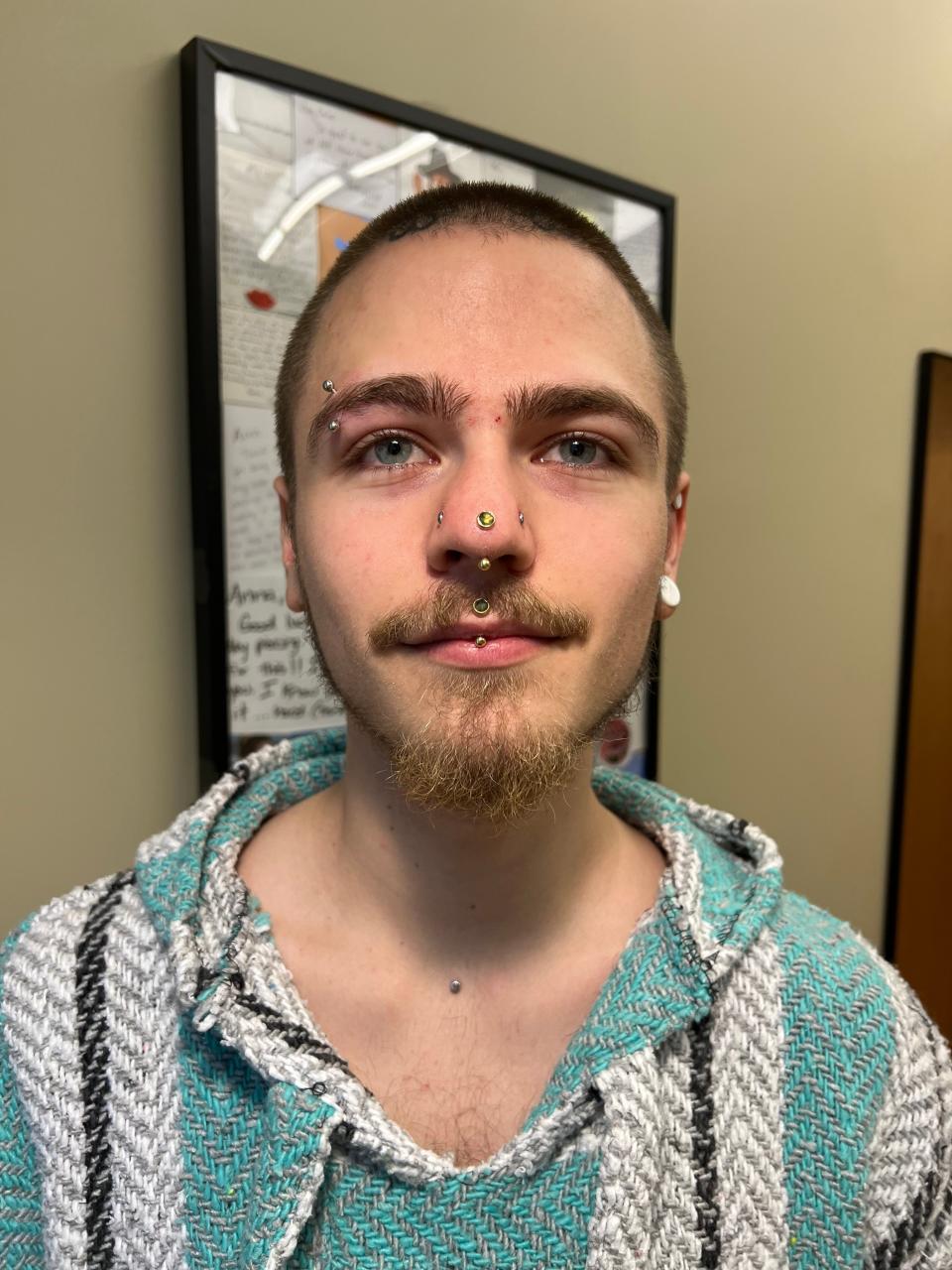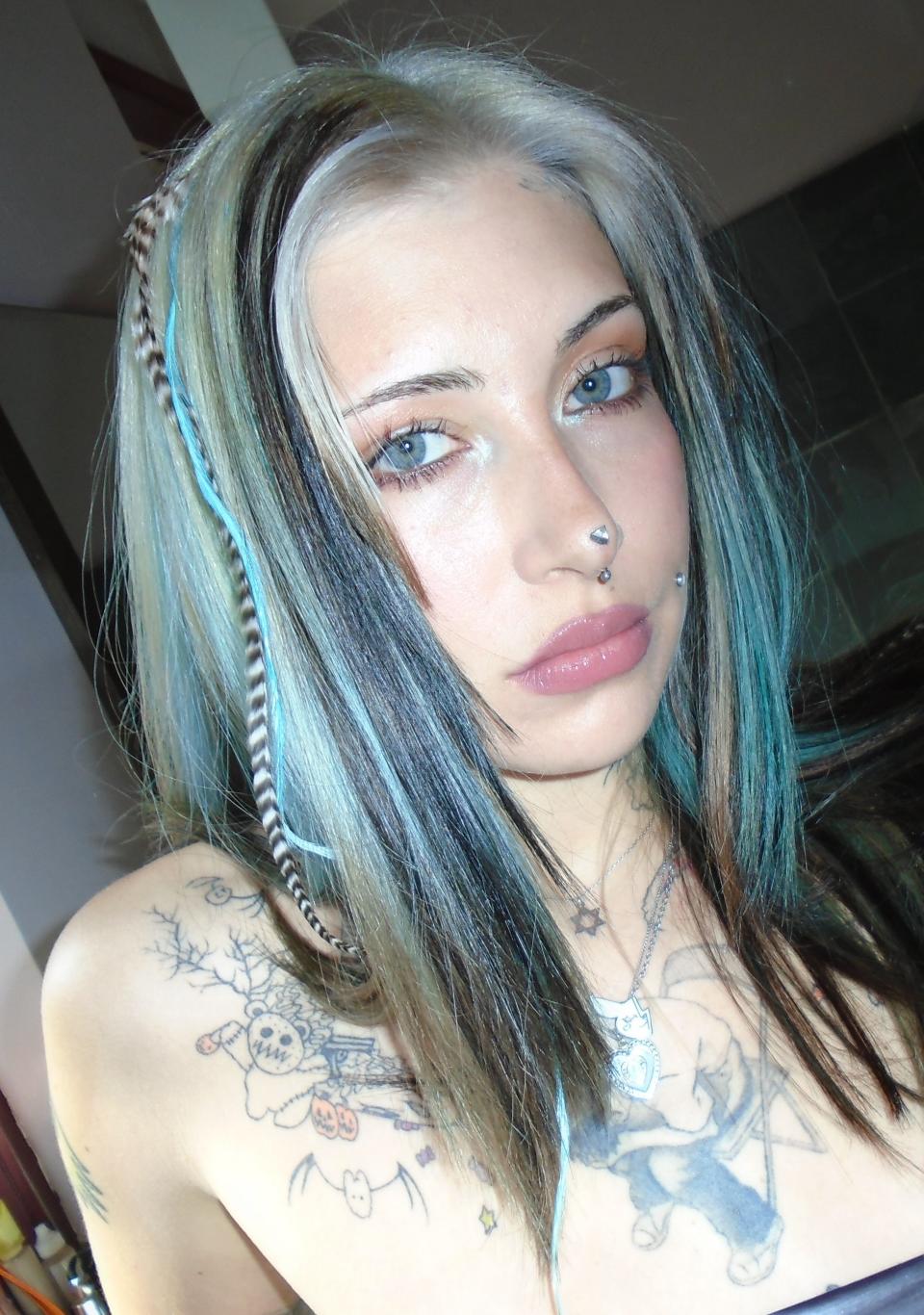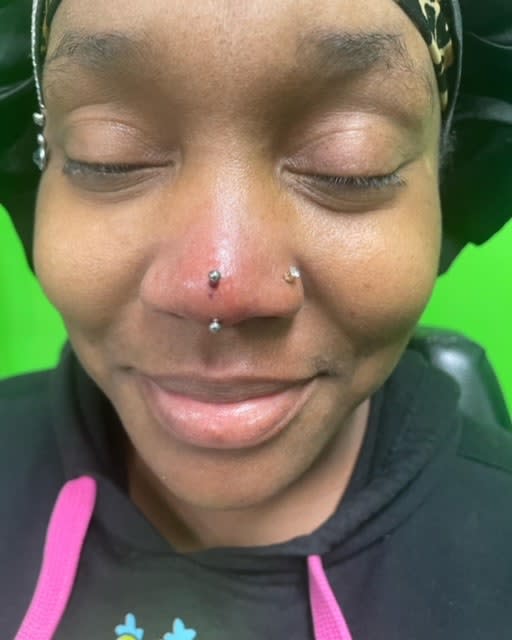Rhino Piercing Is TikTok’s Latest Body Jewelry Obsession—But Is It Safe?

Instagram / @trishapaytastattoo
A rhinoceros is probably the last thing you’d put on your beauty inspo board, but recently the rhino piercing has been having a moment. “The rhino piercing goes by many names,” says Johnny Pearce, a piercer at NYC-based piercing shop Nine Moons. “You may also see it referred to as a vertical nasal tip piercing, vertical nose tip, or a vertical tip piercing.” The piercing goes vertically through the very tip of the nose and, when healed, leaves the wearer with “two cute points of adornment: one slightly above the nasal tip and the lower on the underside of the columella,” says Pearce.
It’s unclear why the daring piercing is trending now but it’s safe to say that it is—the #rhinopiercing has 141.1 million views on TikTok. Pearce says it “appeals to those seeking to deviate from more conventional piercing options like nostril or septum piercings, to enhance their personal sense of style and identity.” A handful of the videos under the hashtag have millions of views and hundreds of comments to the tune of “Is it safe?” and “imagine the pain”—all valid concerns for anyone considering sticking a needle through the tip of their nostril.
So, we did the digging to find out everything you need to know about the rhino piercing including, the pain level, the potential risks, and how to take care of it.
Rhino Piercing Origin
Despite the resemblance to a rhinoceros horn, Pearce says the piercing and its name have little to do with the animal. “Since body piercings come from many cultures across the history of mankind, we [piercers] often defer to language for the origins of many modern names,” says Pearce. The more likely origin story for the modern name “rhino” piercing is that it comes from the Greek word for nose: “rino.” “It’s the same reason that we call cosmetic nose surgery a rhinoplasty—from the Ancient Greek derivative rino (nose) and plastia (shape/mold),” says Pearce.

Rhino Piercing
Anna Beall at CowPok piercing in Buffalo, NYWhile the name has ancient Greek origins, Pearce says the rhino piercing itself can be traced back to indigenous cultures.” “We give full credit to indigenous cultures,” says Pearce. “It is because of them that we still have this wonderful tradition and ceremony for ourselves today.”
Rhino Piercing Risks
Like with any piercing, you should consider the aesthetic placement, functionality, aseptic technique, proper aftercare, and potential risks before getting a rhino. All piercings pose a potential risk of infection (if proper aftercare isn't diligently followed—more on that later). While there isn’t an increased possibility of infection due to the piercing’s placement in the tip of the nose, there is a greater possibility of migration or rejection (compared to, say, a nostril piercing which can lead to visible scarring. “The rhino piercing passes through sensitive tissue, so the need for skilled and experienced piercers who can minimize such risks is paramount,” says Pearce.

Rhino Piercing
Instagram / @trishapaytastattooIf your rhino piercing isn’t installed with proper technique or your aftercare is inadequate, Pearce says “granulated tissue, keloid scarring, or hypertrophic scar tissue may form, affecting the aesthetic outcome.” These complications can also potentially cause damage to the nose that may require medical attention.
“To mitigate these risks, it's essential to choose a reputable piercer who tailors the piercing process to individual anatomy and ensures proper jewelry fit to enhance comfort and minimize complication,” says Pearce. While a skilled professional can decrease these risks, board-certified plastic surgeon Dara Liotta, MD, says the risks of this particular piercing are too high to take at all.
“The tip of the nose is sacred. It’s a complex, finicky, delicate area that is easily injured, scarred, and notoriously difficult to reconstruct once injured,” Dr. Liotta, who specializes in rhinoplasties, says. While all piercings hold the risk of infection, Dr. Liotta says compared to skin infections in other parts of the face, an infection at the tip of the nose and columella can be disastrous.
“Infection here can lead to infection within the brain,” says Dr. Liotta. “The veins that drain blood from this area have a communication (via the ophthalmic veins) to the cavernous sinus (a venous area within the brain). If an infection spreads to the cavernous sinus, it can lead to very serious complications including death.”
Does the Rhino piercing hurt?
Everyone’s pain tolerance is different but the short answer is yes. “Compared to other nose piercings, the location and nature of the rhino piercing can result in heightened discomfort during and after the procedure,” says Pearce.
It’s important to consider your lifestyle and functional needs before committing to this piercing. If you’re someone who has seasonal allergies or has to wear a mask often for work, this is not the piercing for you. “Depending on the size and placement of the jewelry, this piercing may affect simple baseline activities like blowing the nose or overall nasal breathing,” says Pearce.
Rhino Piercing Aftercare
Taking care of your rhino piercing will look a lot like caring for any other piercing. You’ll want to avoid touching your new piercing too much since this can spread bacteria and cause infections. This includes not twisting, pulling, or removing the jewelry. ”Doing so disrupts the healing process and disturbs the regenerating tissue,” says Pearce.

Rhino Piercing
Amber WilkesPay attention to how your piercing feels. “If an action or activity is causing any pain or discomfort, find a way to do it differently,” says Pearce. This might include changing the position in which you sleep if the way you currently snooze puts the piercing at risk of getting bumped. “If your T-shirts or towels get caught on your jewelry, be more mindful of how you are changing or drying off,” says Pearce.
Avoid harsh chemicals around the area like hydrogen peroxide, alcohol, soaps, essential oils, or ointments. Instead, use “water and/or body-neutral wound wash saline and leave the piercing alone to heal,” says Pearce.
In between taking selfies of your cool new piercing be sure to head back to the piercing shop for a check-up appointment after four to eight weeks. “This will allow them to assess your piercing and potentially downsize the jewelry,” says Pearce. “If the jewelry is not downsized, it can delay the healing process and cause some problems.”
Once your piercing is totally healed—which typically takes six to nine months—you can swap out the jewelry for a vertical stud or a barbell.
Discover more piercing stories:
How Tongue Piercings Work, From Pain Level and Placement to Aftercare and Healing Time
Contraconch Ear Piercings Are Gaining Popularity for Its Unexpected Placement
Now, watch Brooke Shields' 10-minute hair routine:
Originally Appeared on Allure


